Indianz.Com > News > Underscore.news: Tribes along Klamath River face another water ‘catastrophe’
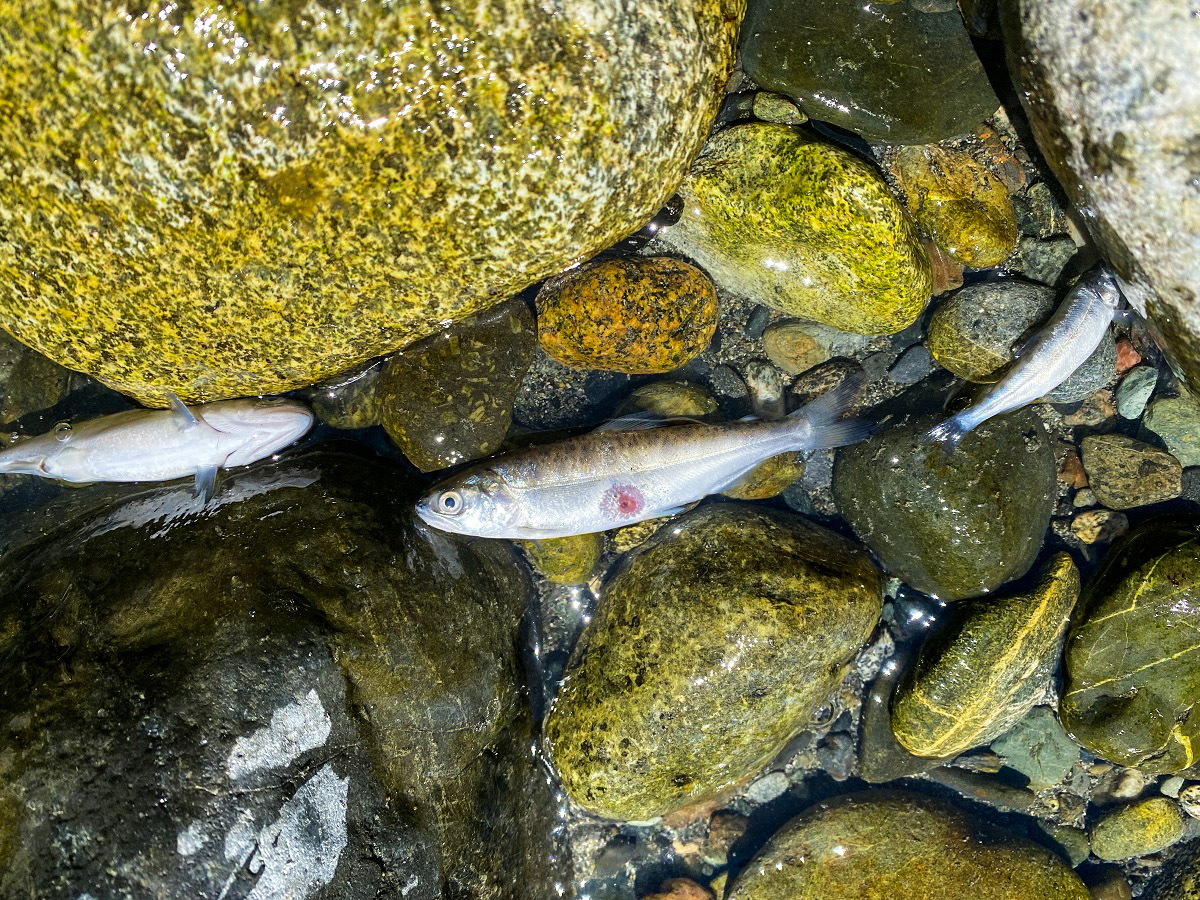
Who has a right to the Klamath River?
The Klamath River flows through two states and the lands of several tribal nations. It’s home to First Foods and provides irrigation. And there’s not enough water to meet everyone’s needs.
Tuesday, August 10, 2021
When Bureau of Reclamation water managers decided not to perform a surface flush of the Klamath River this year, they knew there might be an explosion of a parasite that could all but wipe out salmon populations.
That’s exactly what happened in northern California, where the Yurok Tribe depends on fishing for income and food. Salmon are also an important part of their culture.
On the first Friday in June, an early summer day that would later be ingrained many Yurok citizens’ memories, Barry McCovey, director of the Yurok Tribe’s fisheries department, and his colleagues, fished 361 dead juvenile Chinook salmon out of a monitoring trap on the Klamath River.
It was by far the single highest daily count of dead young salmon since the river’s catastrophic fish kill began at the beginning of May, a dieoff that will create economic shortfalls for years to come
During drought years, the Bureau of Reclamation releases tens of thousands of acre feet of water from the Upper Klamath Lake. The surface flush improves water quality and reduces parasites in the Klamath River. This year, amidst calls by water users upstream to cancel the surface flush, they didn’t.
Since May, more than 70% of the juvenile salmon population in California’s second-largest river has been found dead.
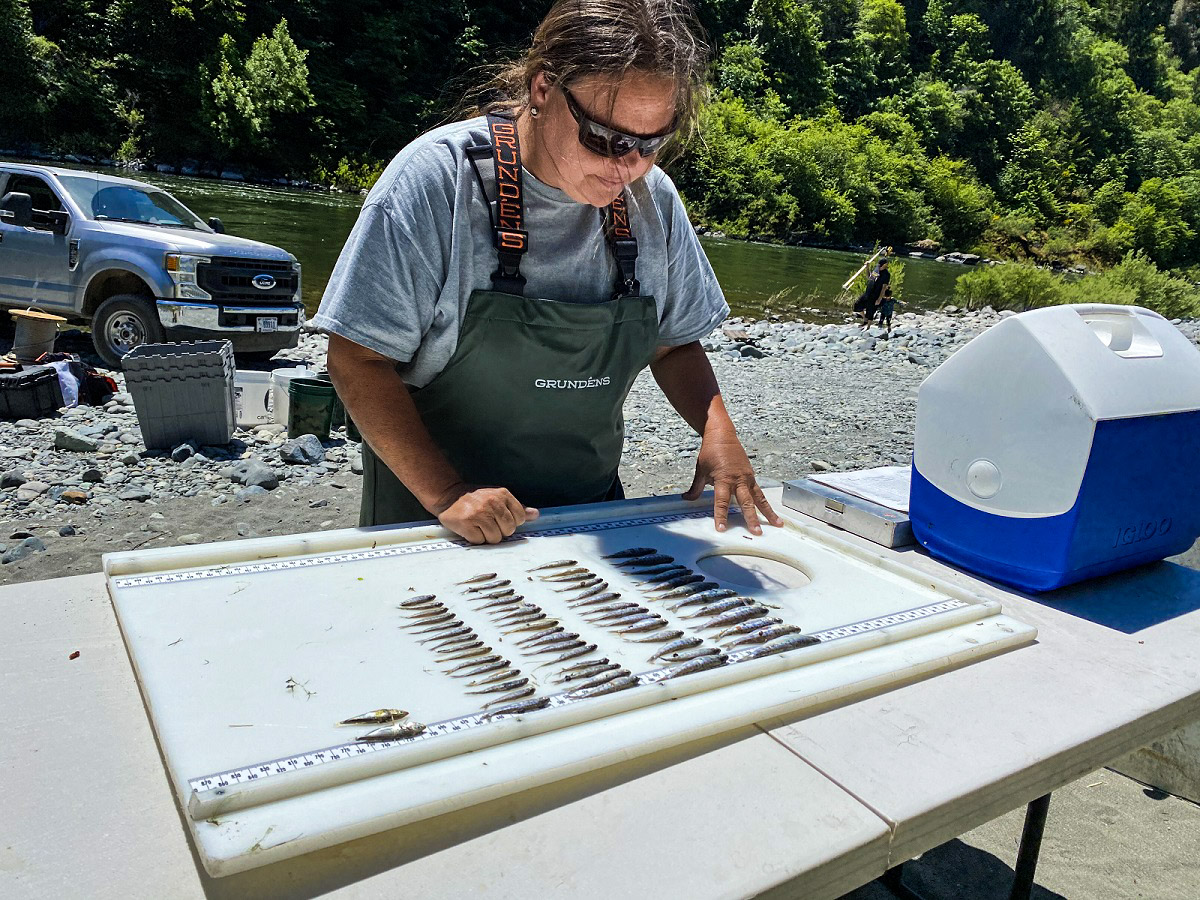
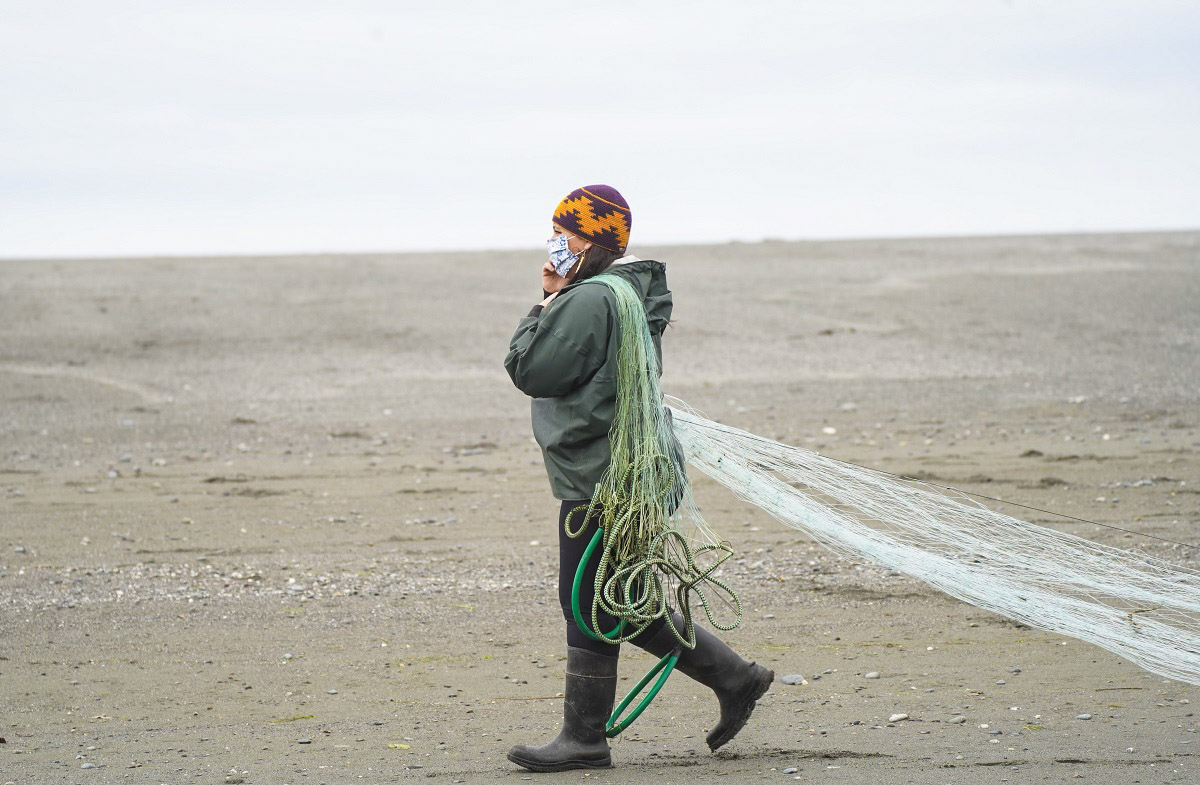
Proposal to Improve Habitat
Some believe the planned removal of several dams along the Klamath could create a regular flow of water that would improve quality and reduce disease — and ease the claims on the water in the Upper Klamath Lake.
The Klamath dam removal is slated to be completed by 2024 but has not yet begun. California Water Board experts believe removing the four dams will have significant benefits for wildlife, including salmon populations.
“Water that is not flushed down the river to address fish disease and poor water quality is potentially more water left in Upper Klamath Lake to be used for other purposes,” explains Dave Meurer, community liaison for the Klamath River Renewal Corporation, a nonprofit overseeing the dam removal project.
The surface flush uses 50,000 acre-feet of water, not an insignificant percentage of the 400,000 acre-feet amount used by farmers.
“Water in the west is often a source of conflict and litigation. While KRRC does not determine who gets water, our project leads to better water quality, reduced disease, and more robust populations of fish,” Meurer said of the dam removal project. “We believe that improved water quality and recovering fish species can potentially help alleviate regulatory pressure on agriculture, while degraded water quality and fewer fish tends to increase regulatory burdens on farmers and ranchers.”
Farmers, however, are worried dam removal could come with stringent regulations further limiting their water rights. There is a fear the irrigators in the Klamath Project, the Bureau of Reclamation’s name for its regional farming program, could be required to take on costs of operation and maintenance of the two dams not being removed that are currently operated by PacifiCorp, says Paul Simmons, executive director, Klamath Water Users Association.
The very outcome Yurok Tribe resource managers are hoping for, improved habitat for salmon, could have a negative outcome for farmers, Simmons said. If salmon move into areas along the California-Oregon state line, where farmers divert water, “there is a risk of new regulatory burdens,” he said.
Water in the region has been mismanaged for decades, say farmers and tribal nations alike. But the irrigators are relying on water to which two tribal nations have a longstanding claim. Since the 1970s, courts have directed the federal government to prioritize the rights of tribal nations and endangered species.
In 1973, the U.S. Supreme Court affirmed the Yurok Tribe’s treaty rights to fish, a ruling that was compounded by a landmark court ruling in 1974, which asserted tribes’ right to co-manage their fisheries and reaffirmed their treaty rights to harvest fish. The ruling followed a spate of arrests of Indigenous fishermen for violating state regulations that didn’t apply to tribal nations.
In 2021, yet another decision, this time by an Oregon court, affirmed the Klamath Tribes’ water rights. That ruling upheld an 1864 treaty between the Klamath Tribes and the U.S. that pledged to keep sufficient water in the Tribes’ fisheries and other aquatic resources to protect Indigenous cultural traditions and natural resources. The Klamath County Circuit Court judge issued an order asserting the Klamath Tribes’ “senior” water rights, which extend to Upper Klamath Lake. Irrigators contested the ruling, and the case is still rumbling on in court.
Prioritizing Endangered Fish
More than 100 miles northeast of where McCovey discovered the salmon die-off, the Klamath Tribes are fighting to keep the Bureau of Reclamation from releasing water from the Upper Klamath Lake. The bureau releases water from the 91,000-acre lake in southern Oregon to water crops and flush the Klamath River, improving water quality for the salmon far downstream.
The May decision to keep the irrigation canal closed “is just the latest illustration of how far beyond their means water users in the Basin have been living,” Klamath Tribal Council Chairman Don Gentry said in a news release. “The definition of insanity is to do the same thing over and over again and expect different results. Until this Basin adapts to a drier future, we will continue to find ourselves facing these conflicts.”
The news release added that the lake “plainly cannot support all the demands being put on it.”
The mismanagement, coupled with extreme drought in Oregon in 2020, which may be replicated or exceeded this year, echoes the summer of 2001, when drought caused the Bureau of Reclamation to cut off water to farmers in the area, who then staged protests to get the water turned back on.
This year’s drought is even worse.
The primary reason water is being held in the Upper Klamath Lake is to preserve populations of C’waam and Koptu, endangered suckerfish that live only in that region. The C’waam and Koptu, or Lost River sucker and shortnose sucker, respectively, are First Foods for the Klamath Tribes but are now so scarce that only two of each species are harvested every year for ceremonial purposes. They’re also protected by the Endangered Species Act, so resource managers must prioritize their needs over other claimants to the Klamath Basin’s water.
The water levels in the lake are at a historic low and the fish need a certain amount of water to survive. The Bureau of Reclamation’s decision to close the irrigation canal and forgo the surface flush was an effort to protect the suckerfish.
“The Klamath situation is huge, complex, and complicated,” says Oregon State University professor Hannah Gosnell, who specializes in land and water conservation. “The drought this summer is the worst one in over 100 years, and the fish in the Upper Klamath Basin are teetering close to extinction.”
Gosnell says that although the crisis in the Klamath is unique in its severity, it’s a conflict that will be replicated throughout the U.S. in years to come.
“It is tragic that this situation is resulting in conflict between Tribes,” Gosnell says. “Those in the lower basin are now at odds with Tribes in the upper basin, and these are Tribes that usually do a lot of partnering and collaboration with each other. It’s also really sad for farmers because they were promised water, and they’re understandably upset that they’re losing out to endangered species.”
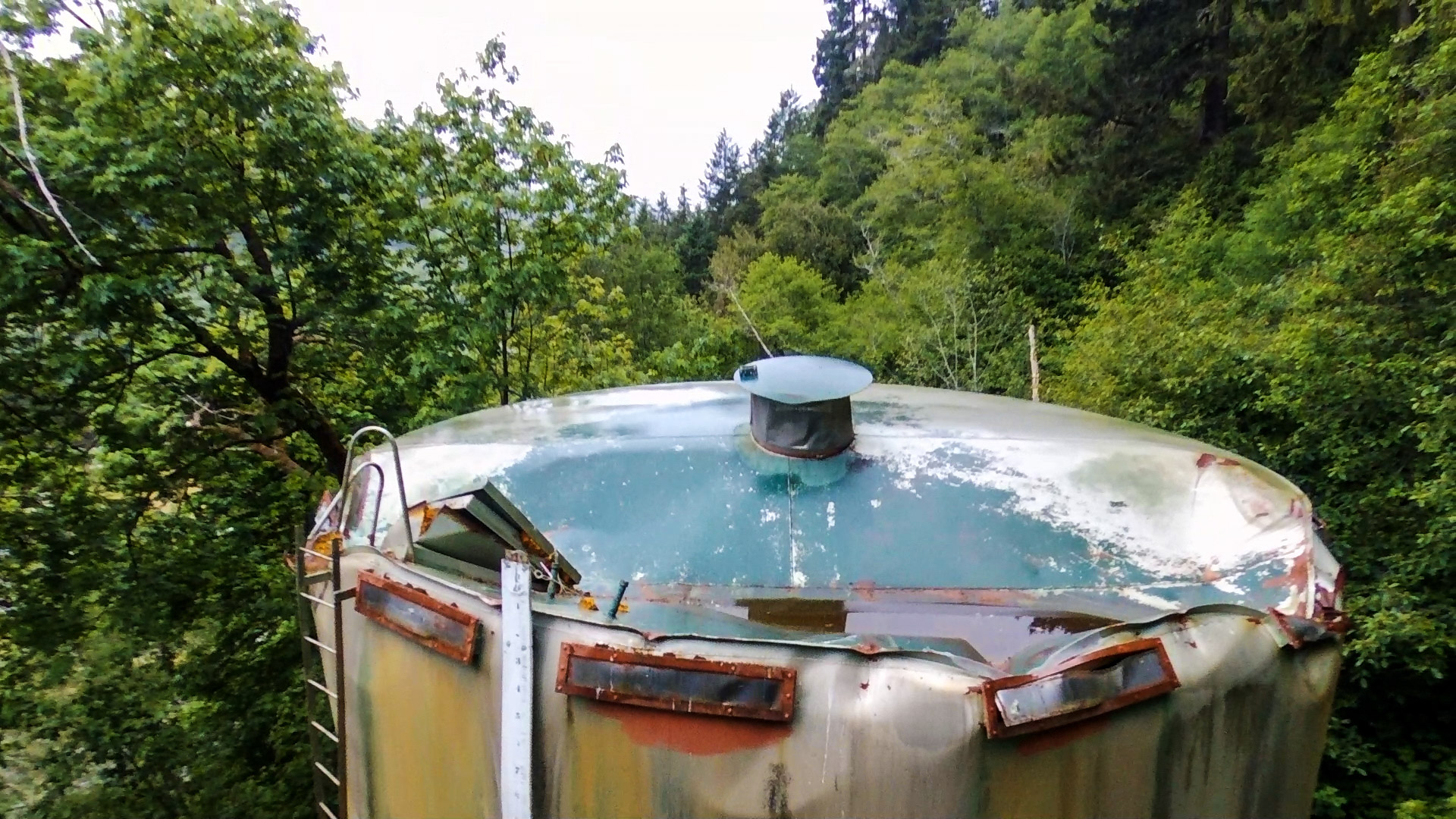
Dry Cropland
Many Oregon farmers are furious about suddenly finding themselves without water for their crops, and fearing they face financial disaster.
“Your average farmer has mortgage payments, property taxes, irrigation district assessments, equipment payments, and the most important need of all: to house and take care of his or her family,” says Ben DuVal, a farmer and president of the Klamath Water Users Association. “No water means no crops, no food, no ability to take care of your family.”
DuVal, who farms in Northern California with his wife and two daughters, described the issue as “a legal problem that needs to get straightened out.”
“We need access to about three percent of the total runoff in the Klamath River watershed in order to irrigate all of the land,” he said. “This year we will receive essentially zero percent, and 400,000 acre-feet less than what we need.”
Farmers in the area grow grass and alfalfa hay, potatoes, grains, and onions, and there are a number of beef and dairy cattle producers.
DuVal says those producers have already been forced to liquidate some of their herds, or fallow their fields, to reduce costs, as there is an inability to irrigate due to the closing of the canal and a lack of forage ground caused by low precipitation.
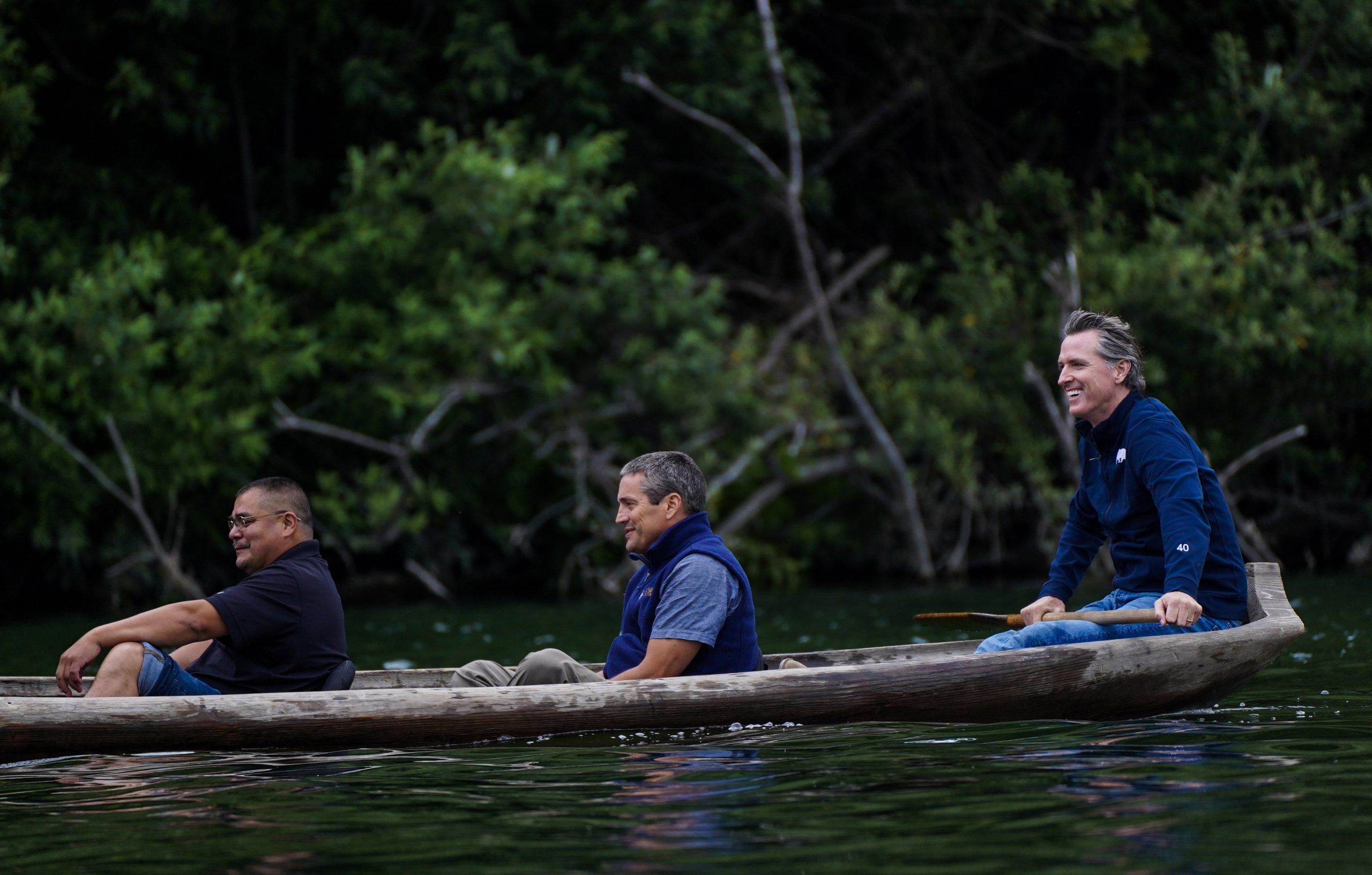
‘It’s Our Culture’
Although he says dam removal is a necessary step toward improving water quality in the Klamath watershed, Meurer says it’s not the only solution.
“The next step, really, an ongoing effort, is watershed restoration projects to improve water quality in the Upper Klamath Lake and river basin, which will improve water quality downstream,” he said. “There are many ways the Klamath could be improved, but dam removal is the foundational improvement on which everything else rests.”
Gosnell says one way to mitigate the catastrophe is strategic purchases by the government to buy out irrigators or pay them to idle their water rights.
“There are simply too many people clamoring and fighting over too little water,” she said.
For farmers, water is their livelihood. For the Yurok Tribe, known as the “Salmon People,” water is life. It not only provides a food source, but it is woven into their heritage.
“It breaks people’s hearts, it breaks people’s spirits to not be able to … fish and provide for your family,” McCovey said.
Removing the dams, he said, will “absolutely” help the fish-kill situation, as well as water quality. “However, the issue of water management and quantity will remain.”
McCovey’s father taught him how to fish. His grandfather taught him how to hang a net and use a boat. “It’s not just the act of catching and eating the fish, there’s so much more that goes into it,” he said. “It’s all the conversations you have with elders learning how to fish well.
“It’s our culture,” he said. “Our identity is intertwined with fishing and catching salmon so innately that we believe that when there’s no more salmon, there’s no more people. We’re really afraid of losing who we are.”
This story originally appeared on Underscore.news, a nonprofit collaborative reporting team in Portland focused on investigative reporting and Indian Country coverage. We are supported by foundations, corporate sponsors and donor contributions. Follow Underscore on Facebook and Twitter.
Lucy Sherriff is a freelance multimedia journalist based in California. She reports on conservation and environmental justice stories, and has been published in BBC, Al Jazeera, TIME, NBC, The Washington Post, and more. Prior to moving to the United States, Lucy was based in Colombia, and won a United Nations Correspondents Award for her reporting on indigenous tribes facing water shortages, and deforestation in rural areas post conflict.
Search
Filed Under
Tags
More Headlines
Native America Calling: Gathering of MCs and Merciless Savages
Native America Calling: Exploring the toll of climate change on Alaska Native villages
‘Very welcoming and enthusiastic’: Lumbee Tribe awaits word from Washington about federal status
Cronkite News: Trump gives new life to aging coal-fired power plants
Native America Calling: Tribes in the arid southwest face water management uncertainty
NAFOA: 5 Things You Need to Know this Week (April 21, 2025)
Chuck Hoskin: Cherokee Nation makes progress for clean water
Native America Calling: Tribes resist fast-tracked Line 5 oil pipeline
Native America Calling: Celebrating Native poetry
Secretary Burgum observes ancestral Native footprints in New Mexico
Cronkite News: Native collective fosters creativity among youth
Arizona Mirror: Alert system in the works for missing endangered relatives
Native America Calling: Tribes challenge states on remaining roadblocks to gaming
New Mexico In Depth: ‘Turquoise Alert’ system established for missing relatives
Montana Free Press: Indigenous Peoples Day closer to reality in Montana
More Headlines
Native America Calling: Exploring the toll of climate change on Alaska Native villages
‘Very welcoming and enthusiastic’: Lumbee Tribe awaits word from Washington about federal status
Cronkite News: Trump gives new life to aging coal-fired power plants
Native America Calling: Tribes in the arid southwest face water management uncertainty
NAFOA: 5 Things You Need to Know this Week (April 21, 2025)
Chuck Hoskin: Cherokee Nation makes progress for clean water
Native America Calling: Tribes resist fast-tracked Line 5 oil pipeline
Native America Calling: Celebrating Native poetry
Secretary Burgum observes ancestral Native footprints in New Mexico
Cronkite News: Native collective fosters creativity among youth
Arizona Mirror: Alert system in the works for missing endangered relatives
Native America Calling: Tribes challenge states on remaining roadblocks to gaming
New Mexico In Depth: ‘Turquoise Alert’ system established for missing relatives
Montana Free Press: Indigenous Peoples Day closer to reality in Montana
More Headlines